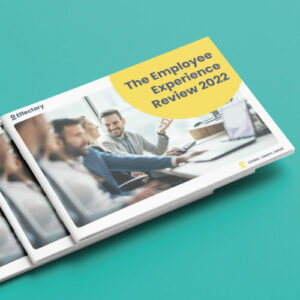The way in which managers ask employees questions has a big impact on the energy level, mutual trust and the success of meetings. When faced with a problem, too many managers are using questioning to find culprits, instead of using it to find the solution.
Using questioning as a valuable management tool

The role of a manager in meetings is to help ensure that questions are effective, well targeted and are addressing the real issues. Our experience has shown us that too often, managers neglect this role.
Are good people managers a pain in the ass?
When working with managers in multinationals, our first question is always: Are you determined to get to the bottom of who and what contributed to the problem? Or do you really want to solve the problem?
How HR can lead business success
HR and employee listening are crucial to business success. Here is how employee insights can help your organization.
DownloadEinstein understood problems
“Problems cannot be solved with the same mindset that created them.” Albert Einstein
As Einstein’s quote alludes to, a solution often has a different reference framework than the problem does. Despite such wisdom being parted many years ago, 80 % of management meetings kickoff with “What is the problem?” Such meetings usually result in employees endlessly commenting on the problem and defining who is involved and what led to the current situation.
Employees usually try everything to avoid being accused as the culprit, and a yes/no inquisition often follows. More often than not, disagreements about who is responsible for the issue rarely arise. Participants tend to agree with each other and as a result, valuable time that could have been used to solve the issue, is lost.
In Warren Berger’s blog: “5 common questions leaders should never ask” Berger explains that how you ask a question is what effects the employee’s view of the organization. Questions leaders should never ask, are for example: “What is the problem?” and “Whose fault is it?” In Berger’s opinion, such questions are focused on blaming employees for, or confronting them with, a problem. The emphasis is on the negative.
On the contrary, questions should highlight the positive. When used positively, questioning can be a valuable leadership tool, and really benefit employees.
Download the Employee Experience Review
Discover how employees around the world are experiencing different parts of the employee journey and how this affects the employee experience.
DownloadSolving without blaming
David Cooperrider, a professor at Case Western Reserve University, is a pioneer of Appreciative Inquiry (AI). AI holds that questions focusing on strengths and using positive language are far more useful to organizations than questions with a negative focus. The four characteristics of AI are: Appreciative, Applicable, Provocative and Collaborative.
Instead of analyzing the problem, the causes, possible solutions and action planning, AI appreciates the best of what there is, envisions what might be, engages in the dialogue about what should be and innovates what will be.
3 ways managers can improve development opportunities
The future-oriented approach of AI maintains positive relationships and invests in the present potential of an employee, organization or situation, using the ‘4-D’ model:
- DISCOVER: Appreciate “The best of what is”.
- DREAM: Imagine “what might be”.
- DESIGN: Determine “what should be”.
- DESTINY: Create “what will be”.
Focus on the solution
From our experience, managers tend to work with a problem and responsibility oriented approach, where questioning is an underutilized leadership tool. Managers are often familiar with AI, but rarely put it into practice.
As an exercise, consider your last management meeting:
- Did it provide the employees with extra energy to move towards a solution for the problem?
- Did mutual trust between employees grow?
- Did the meeting enhance the possibility to solve the problem?
There could be a good chance that the answer to (all) the above-mentioned questions is no. But what if from now on, these questions and the 4D-model are the base for achieving a successful meeting?
Should you manage employees by monitoring them? Or by trusting them?
Alternative questioning
In his blog, Berger recites well implemented examples that can be used as alternative questions to solve issues.
The 2 most common examples are:
- What are we good at and how can we maintain that?
- What is the ideal outcome and how can we achieve that?
Such questions are focused on accumulating employees’ ideas instead of weighing them against each other’s. Our work shows that when questions are asked in a positive manner and accumulate ideas, the energy level, mutual trust and other positive benefits that they create, helps management and employees to find the solutions they need.
David Cooperrider states: “We live in the world our questions create.” The challenge for managers is to make use of this, and to use the power of questioning to lead employees to solutions.
Book a free demo. See our solutions in action.
Effectory is Europe’s Leading provider of Employee Listening Solutions. Schedule a product demo and discover how to enhance your employees’ engagement.
Demo request

